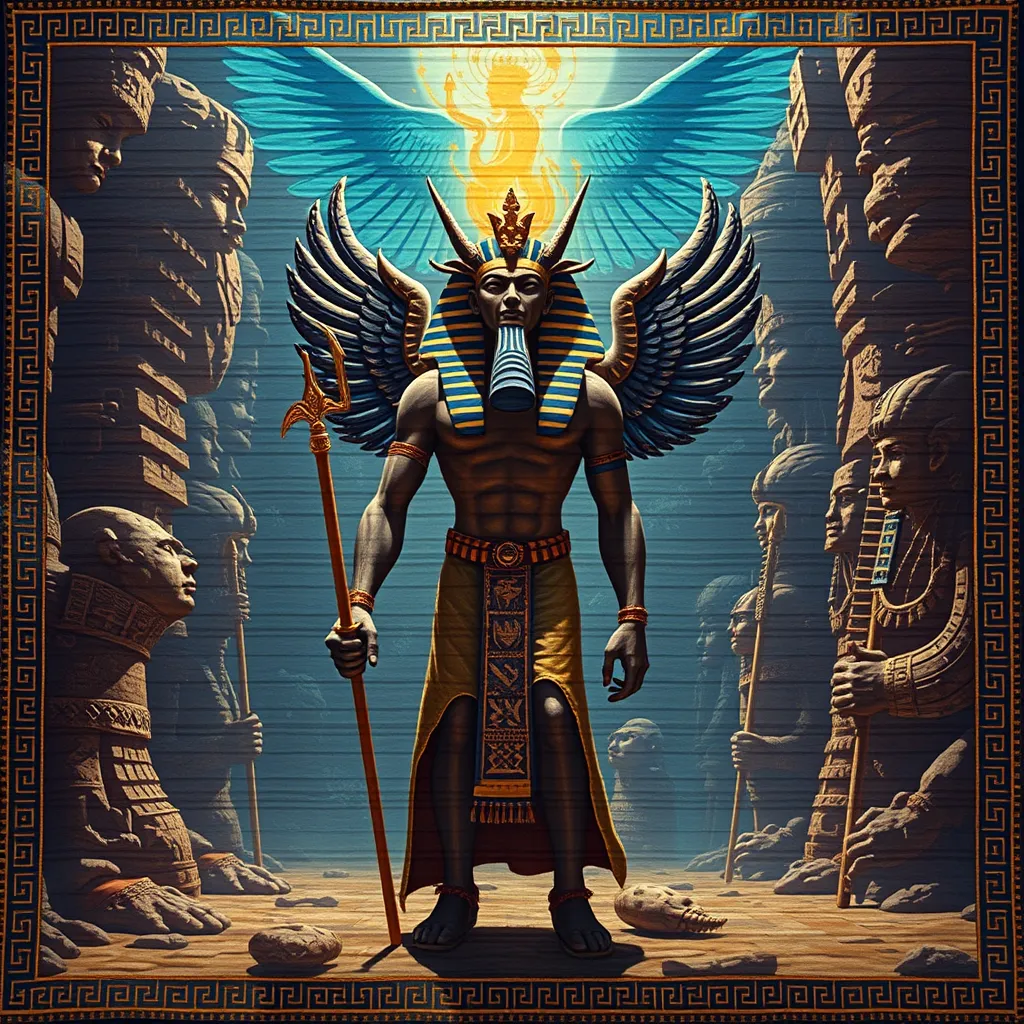The Duat: A Tapestry of Myths and Legends
I. Introduction to the Duat
The Duat, often referred to as the Egyptian afterlife, is a complex and multifaceted concept in ancient Egyptian mythology. It represents not just a physical realm but a rich tapestry of beliefs, practices, and narratives surrounding death and rebirth. Understanding the Duat provides critical insights into how ancient Egyptians viewed life, death, and the journey of the soul.
In essence, the Duat is a mystical underworld where the deceased must navigate challenges and trials to achieve eternal life. This article aims to explore the significance, structure, and enduring legacy of the Duat in both ancient and modern contexts.
II. Historical Context of the Duat
The beliefs surrounding the Duat evolved significantly throughout ancient Egyptian history, influenced by changes in religious practices and sociocultural dynamics. Initially, the afterlife was viewed simply as a continuation of life on earth; however, as time progressed, a more intricate understanding of the afterlife emerged.
Key texts and inscriptions such as the Pyramid Texts and the Coffin Texts provide vivid descriptions of the Duat, illustrating its importance in the funerary practices of the time. These texts not only describe the geography of the Duat but also the rituals necessary for navigating it, emphasizing the Duat’s role in the religious culture of ancient Egypt.
III. Geography and Structure of the Duat
The Duat is often depicted as a dark and mysterious landscape, filled with various realms that represent the trials of the dead. The symbolism of the Duat is profound, often associated with the cycles of nature, particularly the Nile’s annual flooding and the renewal of life.
Key locations within the Duat include:
- The Hall of Ma’at: A crucial place where the heart of the deceased is weighed against the feather of Ma’at, symbolizing truth and justice.
- The Lake of Fire: A terrifying location that represents punishment for the unworthy souls.
- The Field of Reeds: A paradise for the souls deemed worthy, reflecting an idealized version of life on earth.
The journey through the Duat includes multiple stages, each fraught with challenges that test the soul’s worthiness. From navigating dangerous waters to facing various beasts, the journey is both a physical and spiritual odyssey.
IV. Deities and Entities of the Duat
The Duat is inhabited by numerous deities and entities that play pivotal roles in guiding souls through the afterlife. Major gods associated with the Duat include:
- Osiris: The god of the afterlife, resurrection, and fertility, Osiris is central to the journey of the deceased.
- Anubis: The god of mummification and the protector of graves, Anubis guides souls to the Hall of Ma’at.
In addition to the major deities, various spirits and creatures inhabit the Duat, each embodying different aspects of the afterlife. The role of these deities is crucial, as they assist, judge, and sometimes punish souls as they navigate their paths.
V. Myths and Legends Surrounding the Duat
Among the most significant stories tied to the Duat is that of Osiris and his resurrection. This myth illustrates the cycle of death and rebirth, emphasizing the idea that death is not an end but a transformation. Osiris, after being betrayed and killed by his brother Set, is resurrected by his wife, Isis, symbolizing hope and renewal.
The journey of the soul through the Duat is filled with its own myths, depicting the trials faced by the deceased. These narratives often serve as moral lessons, teaching the importance of living a virtuous life to ensure a successful passage through the afterlife.
Interpretations of these myths reveal their cultural significance, as they reflect the values and beliefs of ancient Egyptian society. The Duat encapsulates the fears, hopes, and aspirations of a civilization that placed immense importance on the afterlife.
VI. The Duat in Funerary Practices
Funerary practices in ancient Egypt were deeply intertwined with the beliefs surrounding the Duat. Burial rituals were designed to ensure a safe passage for the deceased, often involving intricate rites and offerings. The use of tombs, mummification, and grave goods all played a role in preparing the soul for its journey.
Funerary texts, particularly the Book of the Dead, were essential for guiding souls through the Duat. These texts provided spells and instructions, ensuring that the deceased could navigate the challenges they would face. The artistry found in tombs also depicted scenes from the Duat, illustrating both the dangers and the rewards awaiting the soul.
VII. The Duat’s Legacy in Modern Culture
The concept of the Duat continues to influence contemporary interpretations of the afterlife. In literature, film, and popular culture, themes of judgment, resurrection, and the journey of the soul echo the ancient Egyptian beliefs.
In modern spiritual practices, elements of the Duat are often revisited as people seek connections to their ancestry and the mysteries of life after death. The Duat serves as a reminder of humanity’s enduring quest to understand what lies beyond the veil of mortality.
VIII. Conclusion
In summary, the Duat has played a vital role in shaping both ancient and modern beliefs about the afterlife. Its intricate myths, deities, and practices reflect a civilization deeply engaged with the concepts of life, death, and rebirth.
The mysteries of the Duat continue to captivate the imagination, reminding us of the enduring questions surrounding existence and the afterlife. Preserving these myths and legends is not only important for understanding ancient Egyptian culture but also for exploring the universal themes that connect us all.




